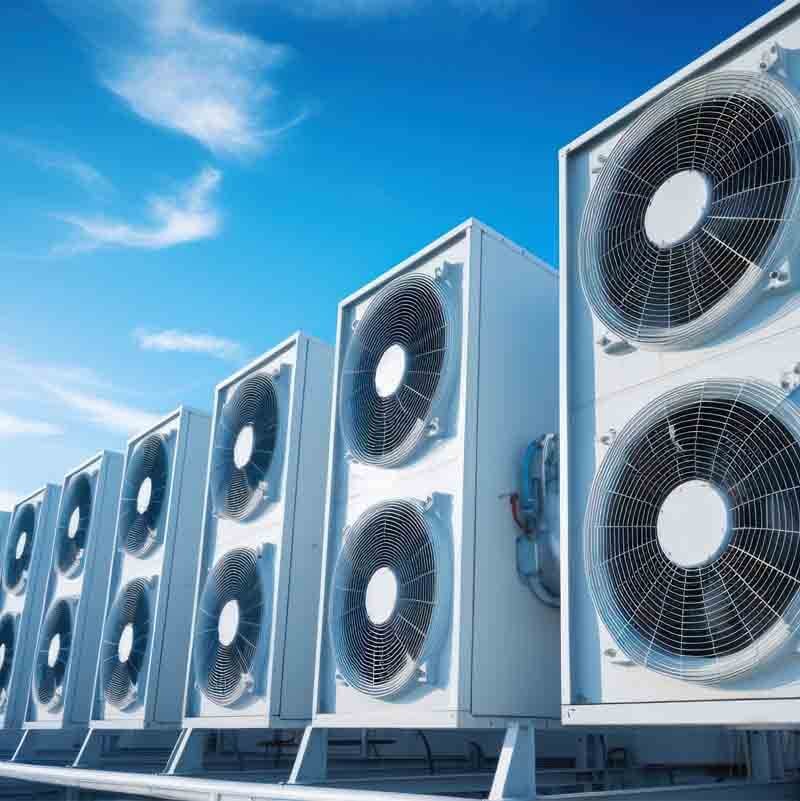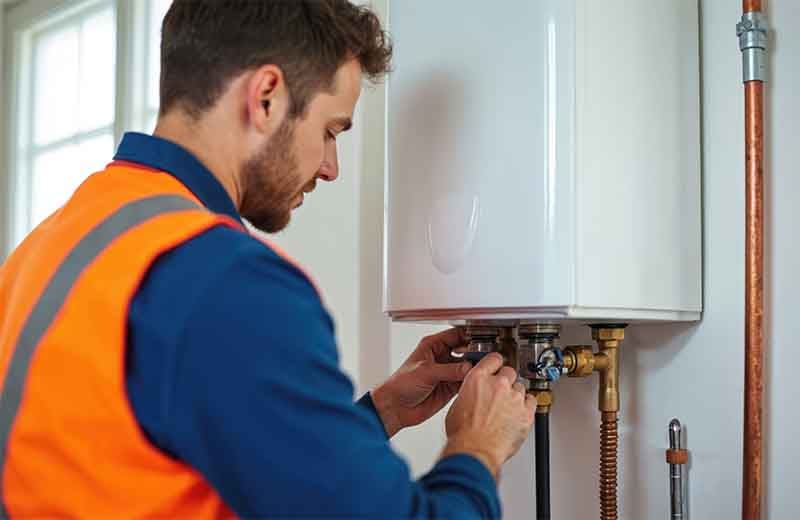If your boiler has come to the end of its serviceable life and you’re looking to replace it, what’s the best way to reduce your carbon emissions without losing performance?
Save with an A-rated boiler system
Replacing your existing boiler like-for-like is an obvious way to meet your building’s heating requirements, as you’ll simply swap out the unit and continue to use your radiators throughout the year. Taking this route is likely to be more convenient, and the install should be straightforward enough to keep costs to a minimum.
Going for another traditional boiler can still bring efficiency benefits, too. By installing a modern, A-rated boiler, your building can be made more energy efficient – especially if your existing boiler is older, or of a lesser grade. In some cases, we see 70% efficient boilers replaced with 98% efficient boilers (depending on the manufacturer), while newer features such as weather compensation and improved zone controls help to realise greater energy savings.
Target higher carbon savings with a hybrid system
If you want to take greater steps to reduce your property’s carbon usage, without necessarily investing in a full alternative system (with its potentially higher costs), it could be time to consider a hybrid system.
Hybrid heating systems combine air or ground source heat pumps with a traditional non-renewable heat source. This could be the existing modern boiler, or a new boiler installed as part of the hybrid upgrade. This option to combine heat sources can be ideal in cases where comprehensive insulating and internal system upgrading (larger radiators and pipework) is either impractical or too expensive. There are a number of different combinations available using this approach, with the most suitable selected on a bespoke, site-by-site basis.
At JLA, we’re finding that many customers don’t want to go to the expense or endure the disruption required to improve and adapt a building’s heating/hot water distribution system to allow for a full low temperature system, powered by a standalone heat pump, that will keep everyone comfortable.
A hybrid approach means your building will only use the higher temperature of the traditional heat source when it’s needed – e.g., for high demand hot water production or a higher heating flow temperature on colder days.
Meanwhile, a state-of-the-art control system will switch between heat sources depending on demand and which is the most cost-effective to run at the time.
Will hybrid heating work in my property?
In general, the largest heat pump you can install on a standard (single phase) domestic electricity supply is 14kW. However, by using either a hybrid, high temperature or cascade system, there’s usually a solution that will heat most properties.
It’s a worth finding out what it would cost to upgrade your electricity supply to a three-phase supply. If the upgrade can be done affordably, it’ll greatly improve your electricity options for both heat pumps and electric vehicle charging. Your Distribution Network Operator (DNO) will be responsible for upgrades to your supply – simply ask your installer to help you get a quote.
A hybrid system is a great first step towards using a zero-carbon heat source, without the immediate need for costly building upgrades. Hybrid also leaves plenty of scope to expand your use of the heat pump in the future.
It’s worth knowing that grant funding isn’t currently available for a hybrid heating system that incorporates a boiler for space heating.
For more information on hybrid heating systems, simply visit the Energy Savings trust website, or contact JLA’s heating specialists.




